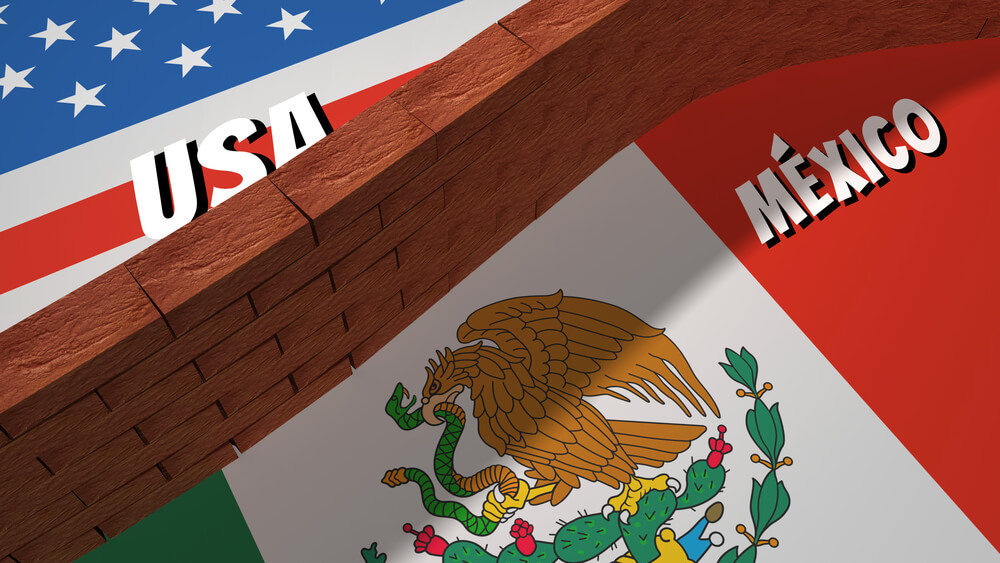In efforts to appease U.S. President Donald Trump and stem the tide of illegal immigrants entering the United States, migrants that formerly amassed in caravans of a couple of thousand people or more no longer see hitchhiking, buses or walking as an option.
That’s somewhat of a victory, but now they’ve turned their attention back to “La Bestia,” or “The Beast,” a massive freight train that is once again rumbling through the night after a raid on a migrant caravan threatens to end the massive highway marches through Mexico to the U.S. border.
According to a report by Business Insider, most of the migrants aboard the train are young men, along with fewer numbers of women and children. The train runs from the southern border state of Chiapaas into Oaxaca and north into Veracruz, a Gulf Coast state.
Despite a number of deaths and lost limbs from falling from the train, it has carried migrants north for decades. The train is reportedly running again after carrying very few migrants starting in 2014, when Mexican authorities began pulling migrants off.
But in mid-April, according to migrant rights activist Rev. Alejandro Solalinde, a change occurred: Large numbers of migrants once again started getting off the train in Ixtepec, where his brother’s migrant shelter is located.
Per Business Insider:
Many had waited weeks for Mexican visas that never materialized, and simply decided to head north without papers. Others were part of a 3,000-person migrant caravan that was broken up in a raid Monday by federal police and immigration agents on a highway east of Ixtepec. With dozens of police and immigration checkpoints dotting the highways, many migrants now view the train as a safer, albeit still risky, way to reach the US border.
“They’re riding the train again. That’s a fact,” said Solalinde, whose shelter now houses about 300 train-riding migrants.
“It’s going to go back to the way it was, the (Mexican) government doesn’t want them to be seen. If the migrants move quietly like a stream of little ants, they’ll allow them to, but they are not going to allow them to move through Mexico publicly or massively,” as they did with the large caravans that began in October. In fact, Solalinde predicts “they’re not going to allow caravans anymore.”
In the raid on April 22, federal police and agents detained 371 people, wrestling men, women and children into patrol trucks and vans and hauling them off, presumably to begin deportation proceedings. Many other migrants abandoned the road and fled into the surrounding countryside. The decision to turn to “The Beast” derives from several reasons, all related to the crackdown.
With throngs of police pickups and small immigration vans parked at checkpoints up and down the narrow waist of southern Mexico, hitchhiking, taking buses or walking is no longer an option. Truckers, warned by the government that they could face fines, no longer give rides to the migrants as they did last year. Migrants are pulled off buses, and rounded up off the sides of highways when they stop to rest.
“Now we’re going by train because we can’t go on buses, because they won’t let us through,” said Rudi Margarita Montoya, the wife of a Honduran carpenter, who was perched atop a freight car with her young son and daughter and her husband.
Abbdel Camargo, a specialist on migration at the College of the Southern Border, said the Mexican government, under pressure from Washington, appears to be employing a strategy of containing migrants at certain points, dividing large groups, deporting people in certain circumstances and wearing migrants down with long waits for work visas.
Mexican authorities are “holding them back at specific points to turn the south of the country into a retaining wall,” Camargo said. And while migrants have resorted to caravans seeking safety in numbers, he said that following Monday’s raid many migrants will surely change their strategies: “They will immediately have to switch from visibility to invisibility, and that can make them more vulnerable and more at risk.”
It’s not as if the migrants think the train is safe; they acknowledge the dangers of riding through the darkness perched high atop the freight cars. Just like increased US border protection, Mexico’s increased enforcement efforts push migrants into using more dangerous means of travel.
Carlos Marroquín, a mechanic from El Salvador, and his wife Brenda Gómez, 24, clambered onto the train with their son, 5 and daughter, 10. Marroquin ticked off the dangers facing them on the rails: “There are drug traffickers, gangs, thieves, but we’re putting everything into this, because it means everything.”
“If we can’t walk, if we can’t take the bus, we’ll go on the train,” Marroquin said.
The migrants are reportedly changing tactics because the Mexican government has largely stopped handing out humanitarian visas and processing asylum requests.
“They lied to us, they made us spend a month at the shelter, they told us they were going to give up papers but they never did,” Gomez said.
The train was popular for years, back when “caravan” just meant small Holy Week demonstrations by migrants on the Guatemala-Mexico border. Now the train is popular once again. Solalinde compared it to trying to squeeze off a leaky garden hose: Wherever Mexican authorities crackdown, the migrants find an alternate route. “Nobody is ever going to be able to stop the flow of migration,” Solalinde said.
President Trump disagrees.
BUILD A WALL & CRIME WILL FALL! pic.twitter.com/a0G7GWi74k
— Donald J. Trump (@realDonaldTrump) January 26, 2019
